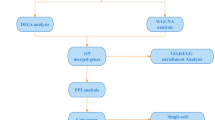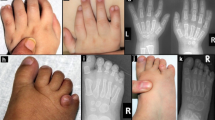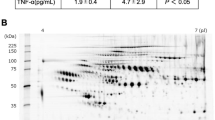Abstract
Electrophoretic analysis of protein variation at the coagulation F13B locus has previously revealed three alleles, with alleles 1, 2, and 3 each being at high frequency in European, African, and Asian populations, respectively. To determine if this unusual pattern of interpopulation differentiation reflects local natural selection or neutral genetic drift, we re-sequenced 4.6 kb of the gene, encompassing all exons, splice junctions, and 1.4 kb of the promoter, in African, European, and Asian samples. These analyses revealed three major lineages, which correspond to the common protein alleles and differ from each other at a non-synonymous substitution in exon 3 and a novel splice acceptor in intron K. There is previous evidence that these lineages are not functionally equivalent; we therefore carried out case–control analyses and confirmed that variability at F13B modulates susceptibility and/or survivorship in coronary artery disease (P<0.05) and type II diabetes within the coronary artery disease cohort (P<0.01). Tajima's D and Fu and Li's tests did not indicate significant departures from neutral expectations. However, publicly available data from SeattleSNPs and HapMap do indicate highly unusual levels of population differentiation (P=0.003) and an excess of allele-specific, extended haplotype homozygosity within the African population (P=0.0125). Possible causes of this putative signal of selection include hematophagous organisms, infection by pathogens that cause disseminated intravascular coagulation, and metabolic or dietary factors.
Similar content being viewed by others
Log in or create a free account to read this content
Gain free access to this article, as well as selected content from this journal and more on nature.com
or
References
Adany R, Bardos H : Factor XIII subunit A as an intracellular transglutaminase. Cell Mol Life Sci 2003; 60: 1049–1060.
Ariens RA, Lai TS, Weisel JW, Greenberg CS, Grant PJ : Role of factor XIII in fibrin clot formation and effects of genetic polymorphisms. Blood 2002; 100: 743–754.
Hashiguchi T, Saito M, Morishita E, Matsuda T, Ichinose A : Two genetic defects in a patient with complete deficiency of the b-subunit for coagulation factor XIII. Blood 1993; 82: 145–150.
Saito M, Asakura H, Yoshida T, Ito K, Okafuji K, Matsuda T : A familial factor XIII subunit B deficiency. Br J Haematol 1990; 74: 290–294.
Board PG : Genetic polymorphism of the B subunit of human coagulation factor XIII. Am J Hum Genet 1980; 32: 348–353.
Nakamura S, Abe K : Genetic polymorphism of coagulation factor XIIIB subunit in Japanese. Ann Hum Genet 1982; 46: 203–207.
Kera Y, Nishimukai H, Yamasawa K : Genetic polymorphism of the B subunit of human coagulation factor XIII: another classification. Hum Genet 1981; 59: 360–364.
Board PG : Genetic heterogeneity of the B subunit of coagulation factor XIII: resolution of type 2. Ann Hum Genet 1984; 48: 223–228.
Kamboh MI, Ferrell RE : Genetic studies of low abundance human plasma proteins. II. Population genetics of coagulation factor XIIIB. Am J Hum Genet 1986; 39: 817–825.
Roychoudhury AK, Nei M : Human Polymorphic Genes: World Distribution. New York: Oxford University Press, 1988.
Saha N, Aston CE, Low PS, Kamboh MI : Racial and genetic determinants of plasma factor XIII activity. Genet Epidemiol 2000; 19: 440–455.
Komanasin N, Catto AJ, Futers TS, van Hylckama Vlieg A, Rosendaal FR, Ariens RA : A novel polymorphism in the factor XIII B-subunit (His95Arg): relationship to subunit dissociation and venous thrombosis. J Thromb Haemost 2005; 3: 2487–2496.
Reiner AP, Heckbert SR, Vos HL et al: Genetic variants of coagulation factor XIII, postmenopausal estrogen therapy, and risk of nonfatal myocardial infarction. Blood 2003; 102: 25–30.
Thompson JD, Higgins DG, Gibson TJ : CLUSTAL W: improving the sensitivity of progressive multiple sequence alignment through sequence weighting, position-specific gap penalties and weight matrix choice. Nucleic Acids Res 1994; 22: 4673–4680.
Rozas J, Rozas R : DnaSP version 3: an integrated program for molecular population genetics and molecular evolution analysis. Bioinformatics 1999; 15: 174–175.
Stephens M, Smith NJ, Donnelly P : A new statistical method for haplotype reconstruction from population data. Am J Hum Genet 2001; 68: 978–989.
Weir BS : Genetic Data Analysis II. Sinauer Associates: Sunderland MA, 1996.
Weir BS, Cockerham CC : Estimating F-statistics for the analysis of population-structure. Evolution 1984; 38: 1358–1370.
Tang K, Thornton KR, Stoneking M : A new approach for using genome scans to detect recent positive selection in the human genome. PLoS Biol 2007; 5: e171.
Hughes DA, Tang K, Strotmann R et al: Parallel selection on TRPV6 in human populations. PLoS ONE 2008; 3: e1686.
Raymond M, Rousset F : Genepop (version-1.2) – population-genetics software for exact tests and ecumenicism. J Hered 1995; 86: 248–249.
Dean AG, Dean JA, Burton AH, Dicker RC : Epi Info™: a general purpose microcomputer program for health information systems. Am J Prev Med 1991; 7: 178–182.
Schaid DJ, Rowland CM, Tines DE, Jacobson RM, Poland GA : Score tests for association between traits and haplotypes when linkage phase is ambiguous. Am J Hum Genet 2002; 70: 425–434.
Thierry-Mieg D, Thierry-Mieg J : AceView: a comprehensive cDNA-supported gene and transcripts annotation. Genome Biol 2006; 7 (Suppl 1: S12): 11–14.
Andolfatto P : Adaptive hitchhiking effects on genome variability. Curr Opin Genet Dev 2001; 11: 635–641.
Bowcock AM, Kidd JR, Mountain JL et al: Drift, admixture, and selection in human evolution: a study with DNA polymorphisms. Proc Natl Acad Sci USA 1991; 88: 839–843.
Beaumont MA, Balding DJ : Identifying adaptive genetic divergence among populations from genome scans. Mol Ecol 2004; 13: 969–980.
Cavalli-Sforza LL : Population structure and human evolution. Proc R Soc Lond B Biol Sci 1966; 164: 362–379.
Sabeti PC, Reich DE, Higgins JM et al: Detecting recent positive selection in the human genome from haplotype structure. Nature 2002; 419: 832–837.
Murray A, Donger C, Fenske C et al: Splicing mutations in KCNQ1: a mutation hot spot at codon 344 that produces in frame transcripts. Circulation 1999; 100: 1077–1084.
Takada D, Ezura Y, Ono S et al: Apolipoprotein H variant modifies plasma triglyceride phenotype in familial hypercholesterolemia: a molecular study in an eight-generation hyperlipidemic family. J Atheroscler Thromb 2003; 10: 79–84.
Iwao M, Morisaki H, Morisaki T : Single-nucleotide polymorphism g.1548G>A (E469K) in human ICAM-1 gene affects mRNA splicing pattern and TPA-induced apoptosis. Biochem Biophys Res Commun 2004; 317: 729–735.
Drysdale CM, McGraw DW, Stack CB et al: Complex promoter and coding region beta 2-adrenergic receptor haplotypes alter receptor expression and predict in vivo responsiveness. Proc Natl Acad Sci USA 2000; 97: 10483–10488.
Kamboh MI : Heterogeneity of factor XIIIB: A new method for the determination of factor XIIIB phenotypes by isoelectric focusing in 6 M Urea. Electrophoresis 1985; 6: 185–186.
Leifheit HJ, Cleve H : Analysis of the genetic polymorphism of coagulation factor XIIIB (FXIIIB) by isoelectric focusing. Electrophoresis 1988; 9: 426–429.
Purcell S, Cherny SS, Sham PC : Genetic Power Calculator: design of linkage and association genetic mapping studies of complex traits. Bioinformatics 2003; 19: 149–150.
Kohler HP, Ariens RA, Catto AJ et al: Factor XIII A-subunit concentration predicts outcome in stroke subjects and vascular outcome in healthy, middle-aged men. Br J Haematol 2002; 118: 825–832.
Przeworski M, Coop G, Wall JD : The signature of positive selection on standing genetic variation. Evolution 2005; 59: 2312–2323.
Finney S, Seale L, Sawyer RT, Wallis RB : Tridegin, a new peptidic inhibitor of factor XIIIa, from the blood-sucking leech Haementeria ghilianii. Biochem J 1997; 324 (Part 3): 797–805.
Ciprandi A, Horn F, Termignoni C : Saliva of hematophagous animals: source of new anticoagulants. Revista Brasileira de Hematologia e Hematerapia 2003; 24: 250–262.
Levi M, van der Poll T : Coagulation in sepsis: all bugs bite equally. Crit Care 2004; 8: 99–100.
Levi M : Current understanding of disseminated intravascular coagulation. Br J Haematol 2004; 124: 567–576.
Das R, Dhokalia A, Huang XZ et al: Study of proinflammatory responses induced by Yersinia pestis in human monocytes using cDNA arrays. Genes Immun 2007; 8: 308–319.
Lee SY, Chang SK, Lee IH, Kim YM, Chung SI : Depletion of plasma factor XIII prevents disseminated intravascular coagulation-induced organ damage. Thromb Haemost 2001; 85: 464–469.
Mansfield MW, Kohler HP, Ariens RA, McCormack LJ, Grant PJ : Circulating levels of coagulation factor XIII in subjects with type 2 diabetes and in their first-degree relatives. Diabetes Care 2000; 23: 703–705.
Warner D, Mansfield M, Grant PJ : Coagulation factor XIII levels in UK Asian subjects with type 2 diabetes mellitus and coronary artery disease. Thromb Haemost 2001; 86: 1117–1118.
Mills JD, Ariens RA, Mansfield MW, Grant PJ : Altered fibrin clot structure in the healthy relatives of patients with premature coronary artery disease. Circulation 2002; 106: 1938–1942.
Acknowledgements
We thank Ryk Ward (Oxford University), Manfred Kayser (MPI, Leipzig), Lutz Röwer (Humboldt-Universität, Berlin), Ilyas Kamboh (University of Pittsburgh) and numerous volunteers for the provision of samples for this study. RAS Ariëns (University of Leeds) kindly provided details of some of the primers and PCR conditions used in this study. The technical assistance of Karsten Schwarz, Birgit Nickel and Barbara Höffner (MPI, Leipzig) and sample collection by Edel Duggan (TCD, Ireland) are gratefully acknowledged. This project was supported by funds from the Max Planck Society, Germany, Hitachi Europe Ltd and the Higher Education Authority Program for Research in Third Level Institutions (PRTLI), Ireland.
Author information
Authors and Affiliations
Corresponding author
Additional information
Conflict of interest
The authors have no conflict of interest to declare.
Supplementary Information accompanies the paper on European Journal of Human Genetics website (http://www.nature.com/ejhg)
Supplementary information
Rights and permissions
About this article
Cite this article
Ryan, A., Hughes, D., Tang, K. et al. Natural selection and the molecular basis of electrophoretic variation at the coagulation F13B locus. Eur J Hum Genet 17, 219–227 (2009). https://doi.org/10.1038/ejhg.2008.137
Received:
Revised:
Accepted:
Published:
Issue date:
DOI: https://doi.org/10.1038/ejhg.2008.137



